You Don't Have to Go to the Great Barrier Reef to Swim With Australia's Wildest Animals
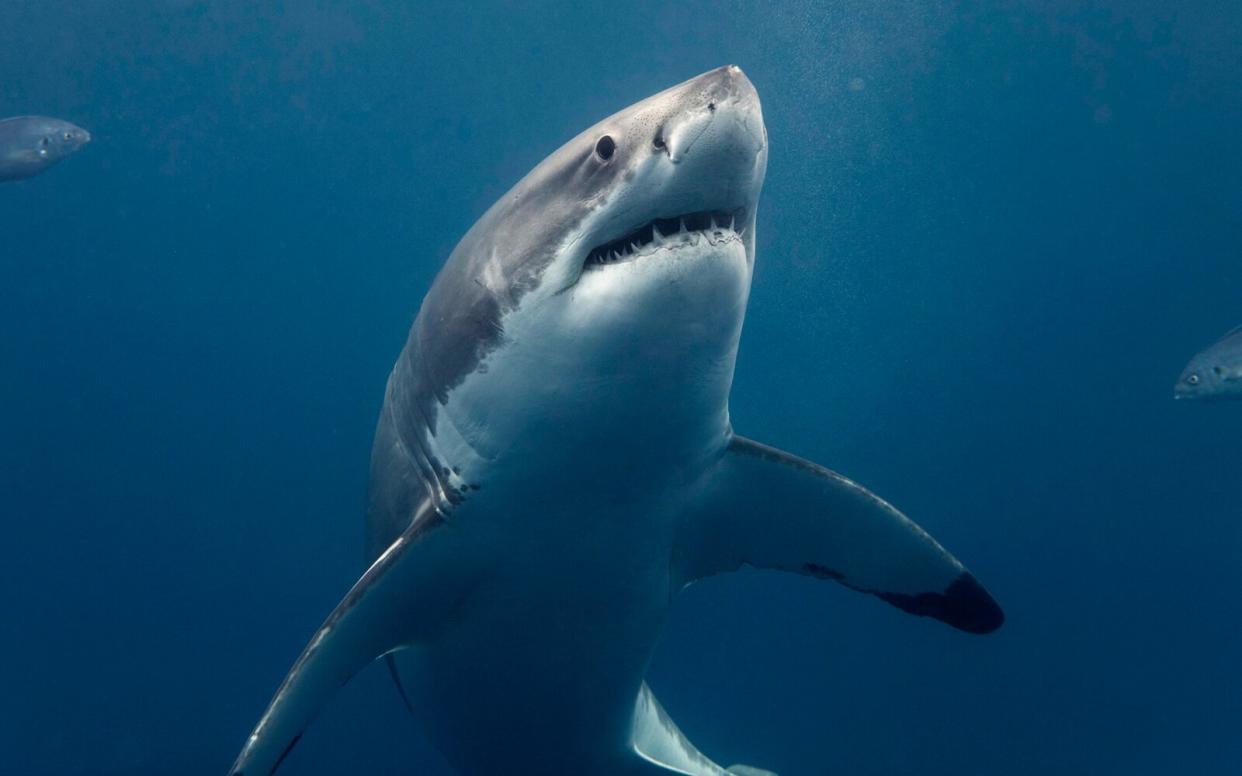
Jem Cresswell
Stretching along 1,400 miles of Australia’s eastern coast, the Great Barrier Reef is one of the greatest natural wonders of the world. Its coral shoals and atolls hold astonishing attractions like the Blue Hole and rare geological formations found few other places, not to mention a profusion of water-based wildlife.
Although the Reef remains on many travelers’ bucket lists, in recent years, scientists have raised concerned about damage wreaked on this water wonderland by climate change, including widespread coral bleaching. The good news is, eco-conscious tourism might be one way to help save the Reef. There are other aquatic adventures to be had around the rest of Australia where visitors can get close to the unique wildlife without the worry of overcrowding or environmental degradation.
Here are a few places where you can swim with Australia’s marine inhabitants without the many tourists you might encounter along the Great Barrier Reef.
Sea lions in Boston Bay, South Australia
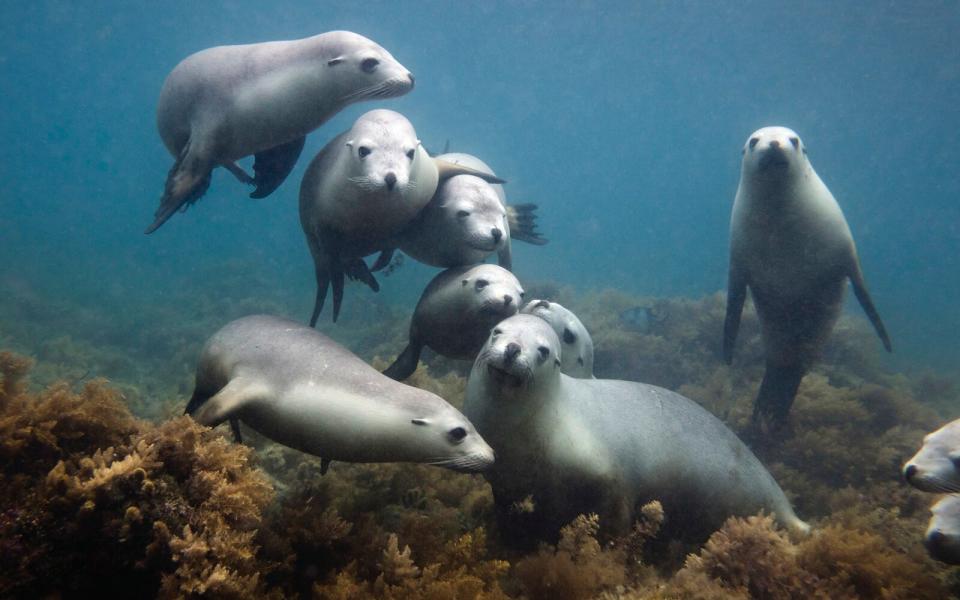
Jem Cresswell
Swimming with sea lions has to be, hands down, one of the most delightful wildlife experiences in the world. The folks who run Adventure Bay Charters out of Port Lincoln on South Australia’s Eyre Peninsula call them “the puppies of the sea,” and it is easy to see why. When the charter boat pulls up to the shallow waters of Seal Cove after a two-hour cruise, the animals practically leap off the beach and into the water, beckoning for the humans onboard to join them. What follows is an hour of swimming, diving, jumping, flipping and general merriment as the sea lions play around and with visitors. This is the exact experience waterproof GoPros were made for. Adult swims start at $205 AUD ($155) per person.
When to go: Depending on the charter company you go with, tours tend to operate between September and early June.
What else to do: Port Lincoln is a 50-minute flight west of Adelaide on either Rex or Qantas. The town itself is small, but has a lively dining scene with restaurants like Del Giorno’s for fresh seafood and gourmet Line and Label at Peter Teakle Wines, not to mention a craft brewery, Beer Garden Brewing, and upscale accommodations at the Port Lincoln Hotel.
Whale sharks at Ningaloo Reef, Western Australia
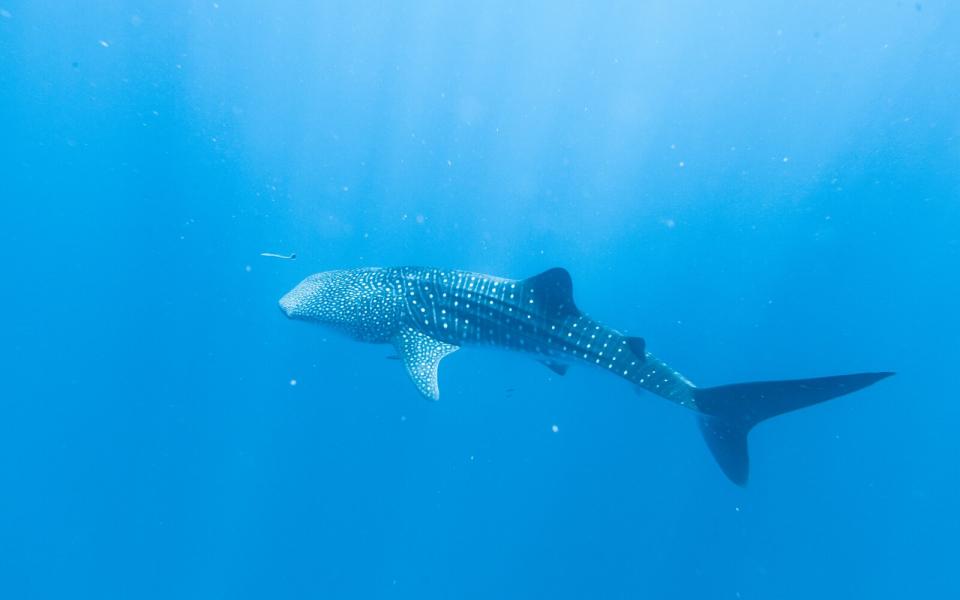
James D. Morgan/Getty Images
Growing up to 40 feet in length and weighing over 20 tons, whale sharks are the largest fish in the world. Though these gentle giants do have teeth, they are filter feeders who migrate through Western Australia’s UNESCO-listed Ningaloo Reef each year to feed in the plankton-rich waters. Only a handful of charter boat companies, including Ocean Eco Adventures and Live Ningaloo, have licenses to take visitors out to swim with the whale sharks and only 10 people are allowed in the water at a time per shark, so there are no jam-packed tourist boats or crowds of snap-happy sightseers. Once the sharks are located (usually with the aid of spotter planes flying overhead), snorkelers get into the water with guides and swim alongside these languid leviathans. The experience is both awe-inspiring and exhilarating. During the rest of the day trip, you might also spot manta rays, dolphins, turtles and humpback whales, so the whale sharks are just the start.
When to go: The whale sharks tend to migrate in through area from mid-April through mid-September, though the best sightings tend to occur May-July.
What else to do: The gateway to Ningaloo Reef is the town of Exmouth, about a two-hour flight north of Perth. Many folks stay in town at hotels like the Manta Rays Ningaloo Beach Resort and Exmouth Escape Resort. However, travelers on a bigger budget can book into Sal Salis, a low-impact, safari-style luxury camp right in Cape Range National Park along the coast. On land, folks can hike the dramatic canyons Yardie Creek and the rugged Mandu Mandu Gorge looking for wildlife like black-footed rock wallabies, red kangaroos, dingos, echidnas and emus.
Humpback whales on the Sunshine Coast, Queensland
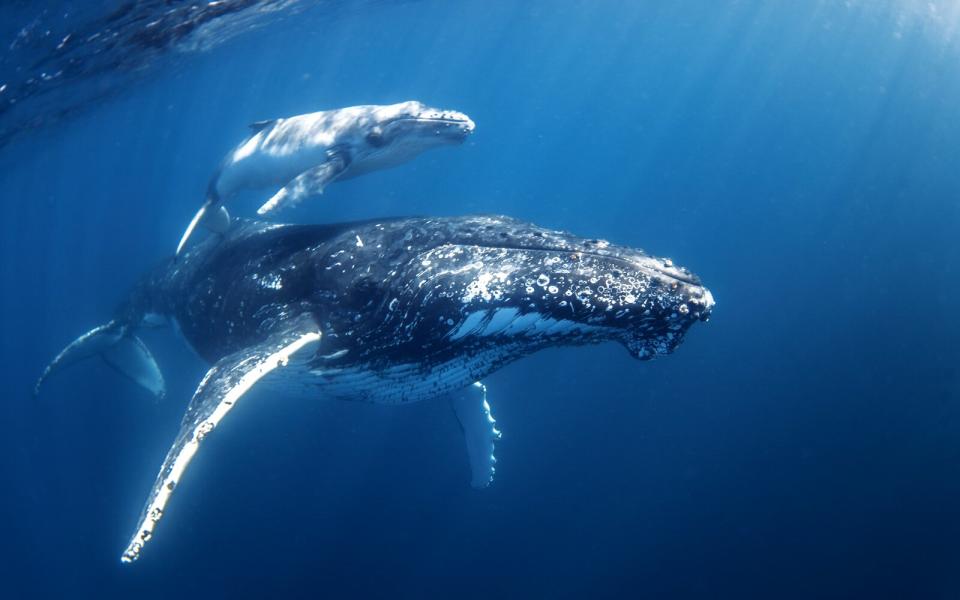
Courtesy of Migration Media - Underwater Imaging
To the south of the Great Barrier Reef along Queensland’s Sunshine Coast, Sunreef has been offering humpback whale swims from its base in Mooloolaba since 2014. The company tries to take as low-impact an approach as possible as part of its self-imposed code of practice. Only 20 guests are allowed per cruise. The ship avoids mother-calf pairs, maintains a distance of at least 100 meters from the animals, assesses the whale’s behavior for any safety concerns and drops swimmers in the water at a slight remove from the whale, leaving it up to the animal whether to approach or not. Despite the hands-off tactics, the company estimates around 70% of excursions result in in-water interactions between humans and whales. Rates start at $149 AUD ($112) per person.
When to go: Humpbacks tend to pass by on their 7,000-mile journey to Antarctica during the Australian winter, with whale-swim charters departing July 6 through October 22 this year.
What else to do: The Sunshine coast is about 60 miles north of Brisbane, which makes Australia’s third-largest city the ideal base for a day trip up to see the whales. Brisbane’s art scene has been thriving in recent years thanks to the development of the South Bank cultural district with mainstays like the Queensland Art Gallery and Gallery of Modern Art. In the Spring Hill neighborhood, The Johnson hotel is named after and displays the works of Michael Johnson, one of Australia’s most acclaimed contemporary artists. Be sure to book a table at cookbook author and chef Philip Johnson’s E’cco Bistro in the trendy new Skyring Terrace area, where the multi-course tasting menus incorporate seasonal produce from Queensland’s farms and seafood from its waters.
Sea turtles on Lord Howe Island, New South Wales
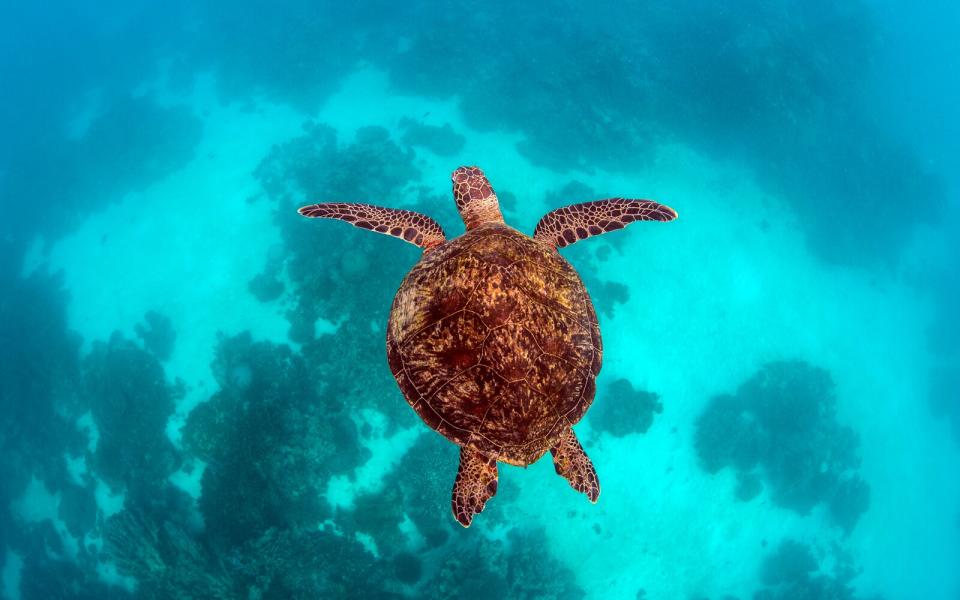
Getty Images
World Heritage-listed Lord Howe Island is one of Australia’s best-kept secrets. This tiny paradise is all that remains of an ancient volcanic crater, its forest-covered peaks rising dramatically from the ocean floor of the Tasman Sea about midway between Australia and New Zealand. Only 400 visitors at a time are allowed here, so it’s not long before everyone in town knows your name. The island is also home to hundreds of thousands of seabirds, 500 species of fish, 90 types of coral and enormous green sea turtles and endangered hawksbill turtles with whom you can simply hop in the water and snorkel alongside thanks to tour operators like Islander Cruises and Marine Adventures. Snorkeling cruises cost $50-$60 AUD ($38-$45) per person.
When to go: Lord Howe Island’s sub-tropical climate is temperate all year round, but the best time to see the turtles is November through April.
What else to do: Lord Howe Island is about a two-hour flight from either Sydney or Brisbane on Qantas. Arajilla Retreat has just 12 suites dotted around its lush, tropical gardens while the luxurious Capella Lodge is set off by itself on the island’s quieter south side. The island offers a plethora of hikes ranging from easy walks to challenging climbs, after which you can enjoy a DIY beach barbecue at Ned’s Beach.
Wild dolphins in Rockingham, Western Australia
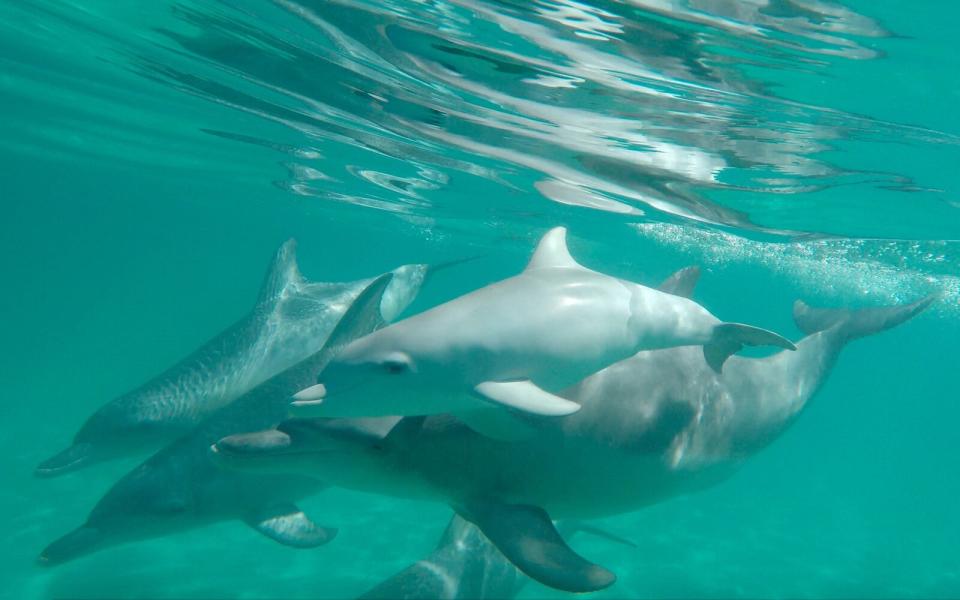
Courtesy of Rockingham Wild Encounters
Waterparks offering “swimming with dolphins” are a dime a dozen in vacation destinations around the world. What sets this excursion apart, though, is the fact that participants get to visit wild dolphins on their own terms. Rockingham Wild Encounters has been providing these tours since 1989, so they actually know many of the 200 bottlenose dolphins who live in the area by name, and the focus is firmly on education and conservation as guides provide insight into the dolphins’ behavior, life cycle and the environment issues that impact them. But let’s not undersell the fun. While snorkelers are in the water, the dolphins tend to swim and play, hunt fish and even mate. Best of all, the company has a 99% success rate of locating and getting people in the water with the wild dolphins on any given day.
When to go: Rockingham Wild Encounters offers these tours from September through early June with prices starting at $205 AUD ($155) per person.
What else to do: Rockingham is a 45-minute drive south of Perth, which has recently seen the debut of myriad new hotels including the luxurious COMO The Treasury, the bohemian Tribe Perth and the just-opened Westin Perth. The city’s riverfront Elizabeth Quay has undergone a huge redevelopment with restaurants, bars and shops, while the Northbridge neighborhood has become the city’s arts hubs thanks to institutions like the State Theatre Centre, the Perth Cultural Centre and the Art Gallery of WA.
Great white sharks in the Neptune Islands, South Australia

Jem Cresswell
Want to swim with some of the Earth’s most fearsome predators? The Neptune Islands off South Australia’s Eyre Peninsula are one of the only places in the country where you can go cage diving with great white sharks. You might also be lucky enough to see some of the other types of sharks that frequent the area, like hammerheads, bronze whalers and makos as well as dolphins, orcas and more. Long-running operators include Calypso Star Charters for day tours and Rodney Fox Shark Expeditions for multi-day sea safaris with the option of staying in either a surface cage or scuba diving in one that descends to the ocean floor.
When to go: Tours run year-round.
What else to do: Port Lincoln will be your base for this one as well. Plan to stay a few extra days so you can spend time with bespoke tour operators like Goin’ Off Safaris and Australian Wildlife Adventures who can arrange activities like scenic helicopter flights over the dramatic coastline, beach fishing and picnics, and an oyster bed tour and tasting with Pure Coffin Bay Oysters.

